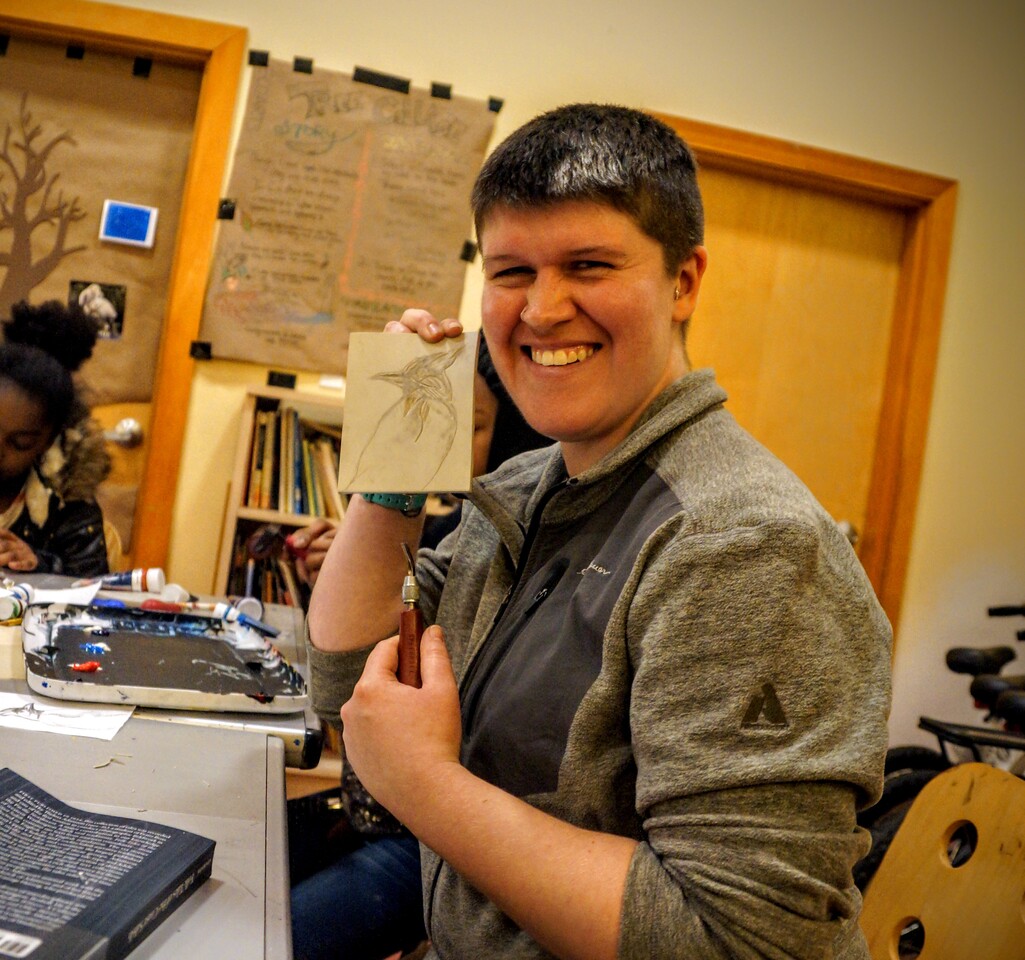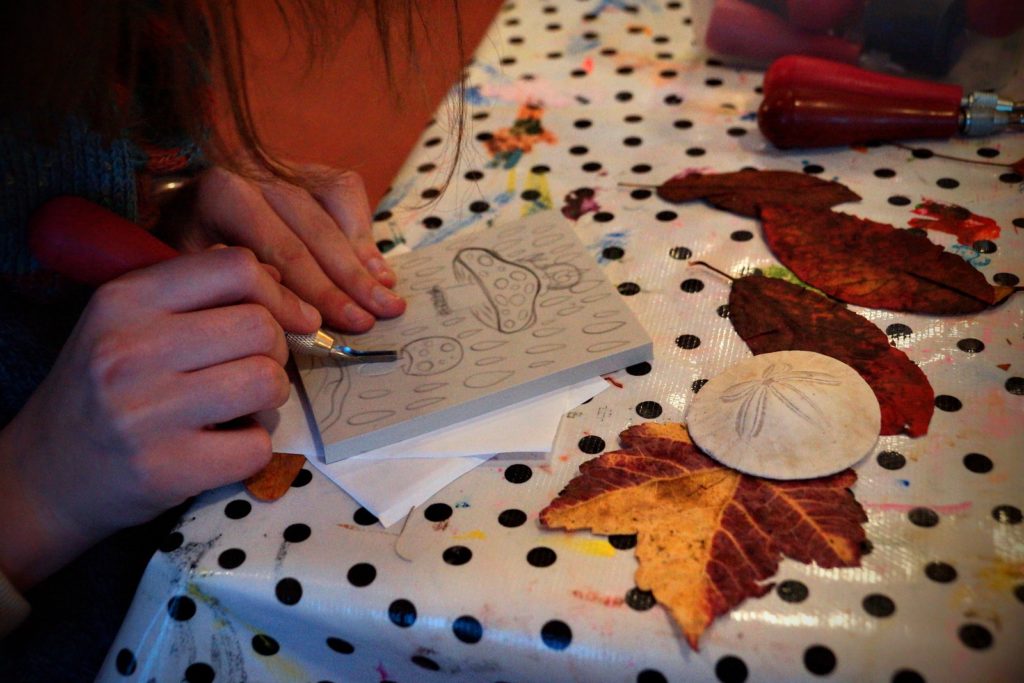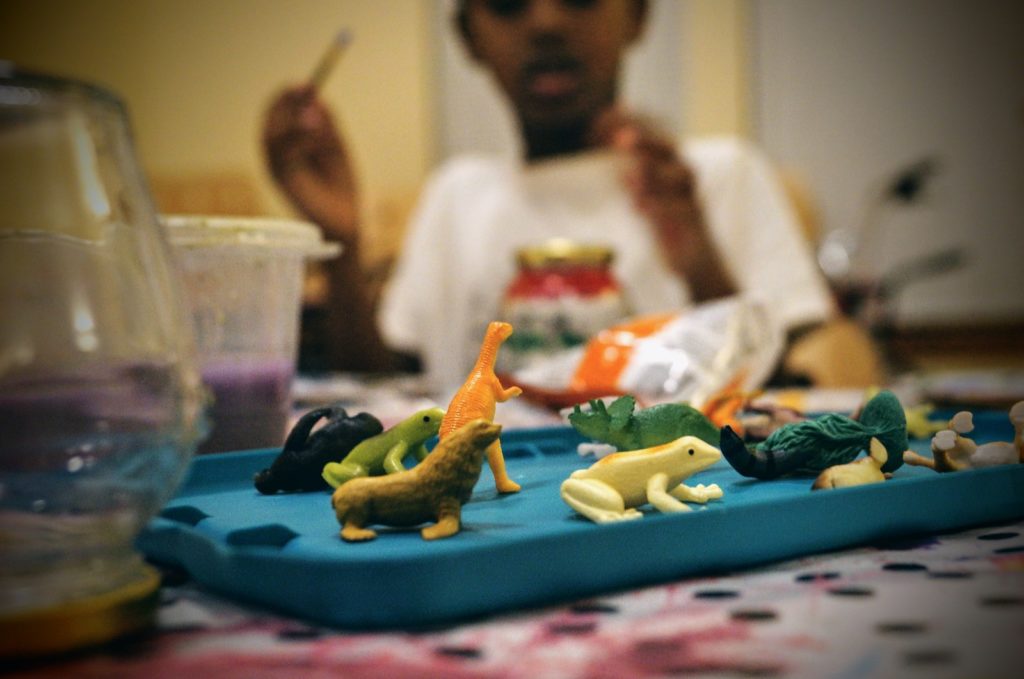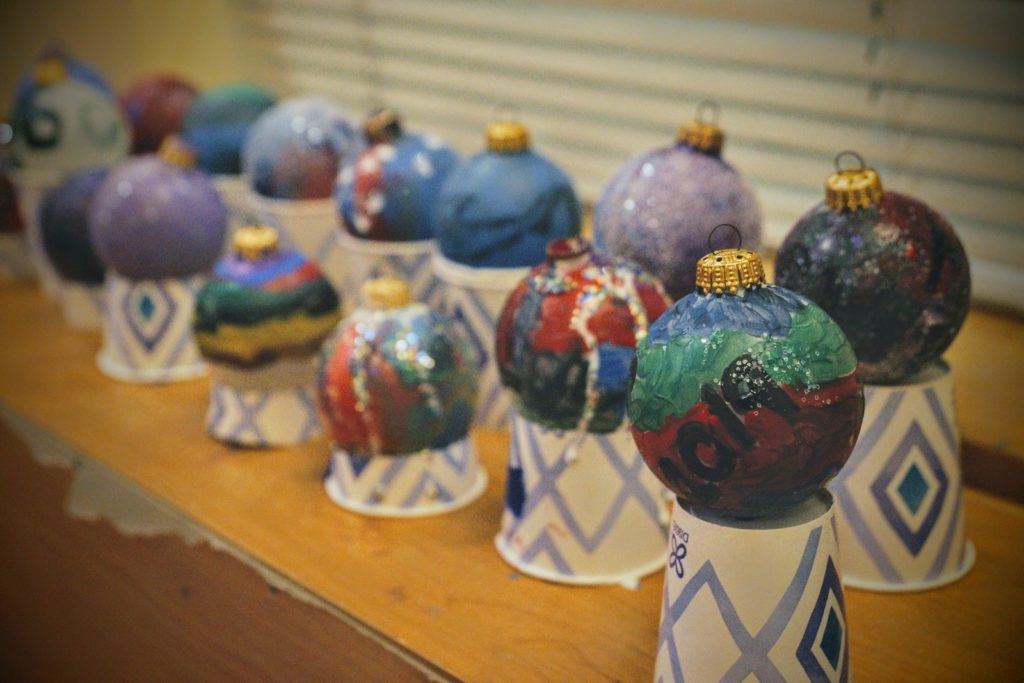A *Flurry* of Holiday Crafts at Croft
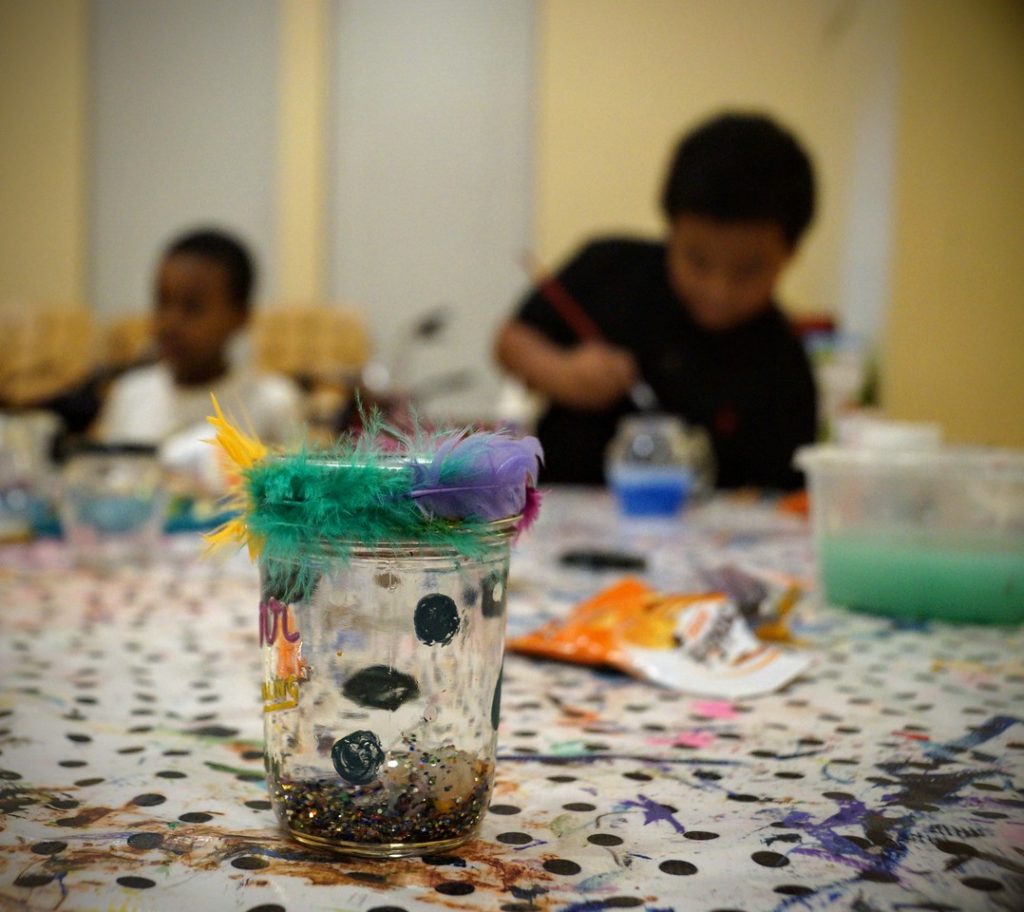
Have you ever made a snow globe? It doesn’t have to be a “snow” globe…Between November to December 2019, the kids at Croft made magical creations, like these underwater worlds within jars.
It’s almost the end of 2019—and what better way to celebrate than with a series of holiday craft-making classes! To round out this year’s programming at Croft Place Townhomes, teaching artist Molly Duttry and the EcoArts Program Coordinator Madison Bristol facilitated art classes centered around the season, which included canvas painting, block printing cards of gratitude, making nature-themed snow globes, and decorating ornaments.
Tuesday November 19th: Canvas Painting
We’ve been noticing that the kids at Croft LOVE painting. No matter what our activities are centered around, if there is acrylic paint and paint brushes, we can feel the energy in the room shift towards focused creativity. For this reason, we started off our Holiday series with canvas painting. The kids could create whatever their hearts desired, and many of them painted canvases as a gift for teachers, friends, and family.
Tuesday November 26th: Block Printing Cards of Gratitude with Teaching Artist Jules Hepp
Right before Thanksgiving—the holiday of gratitude—we were lucky enough to be joined by Teaching Artist Jules Hepp, who taught an EcoArts block printing class. Jules brought along with them a wealth of knowledge in the form of books on natural history and indigenous storytelling, which they use as inspiration for their artwork. Some of this passion rubbed off on the kids—they spent ample time perusing through the books to spark ideas on card designs.

Jules organized the students in a circle around sources of inspiration, including books on indigenous storytelling, PNW natural history, and natural materials foraged from around Delridge.
The Block Printing Process:
In order to print their designs on cards, the kids first had to carve the designs out of a linoleum block. To do this, we recommended they start by sketching their designs on a piece of transfer paper, and then pressing this design onto the linoleum. This way, the graphite is transferred to the linoleum block. Once they had a clear design sketched on the linoleum, they used tools to carve out their designs. This artform exemplifies the idea of negative space—in that while creating your design, you must be conscientious about what will leave an imprint in ink and what will remain white.
Once their block carving was ready to go, the kids could move on to the printing process. First, they chose which colors they wanted their print to be. Then they spread an even coat of paint on a brayer by rolling the brayer back and forth on a tray. Next, they painted their blocks by rolling the brayer over the block, repeating this until the block was covered in an ample coat of paint. Finally, they pressed a card on top of the block, rubbing the card to transfer most of the paint. Peeling the card away from the block revealed the final product. Block printing is an incredibly satisfying artform because each time this process is repeated, new variations of the same design are created.

This image exemplifies the final stages of the block printing process. In the center is the brayer—or another term for a roller—covered in block printing ink. This brayer has been rolled over the linoleum carving, which is in the upper right corner. This student made numerous cards out of the same design, one of which can be seen here in blue and purple.

This student was inspired to create a card emulating Lamb’s-ear, a very fuzzy plant that can be found in gardens around the Pacific Northwest.
Tuesday December 3rd: Snow Globes
Our third holiday craft-making class featured an event that the kids had been raving about for weeks—making snow globes! Expanding the scope of what a snow globe could be, we brought an assortment of creatures to be the centerpiece of their creations, and plenty of decorating materials.
For this DIY snow globe project, we helped the kids glue their creature of choice onto the bottom of a mason jar lid. While that was drying, they painted and decorated the outside of their jars, and once complete, filled their jars with water and glitter.

We helped one student glue a penguin to the bottom of her lid, after which she created a snow globe reminiscent of an Antarctic snowscape.
As the EcoArts Program, one aspect of programming we are improving on is fulfilling our mission of using environmentally friendly art materials. Glitter has made the news as a harmful microplastic to marine organisms, for it never truly biodegrades but rather breaks down into smaller and smaller pieces over time. But the kids love glitter, and in creating worlds revolved around animals, their connection to the environment develops. In the future, we will work to make sure that both the message and materials of our programs serve the same goal by seeking out biodegradable alternatives.

Waves, murky water, starfish, pipe cleaner kelp, and some eyes poking out behind the fronds—this watery world is like our own Puget Sound.
Tuesday December 10th: Ornaments and Pizza Party!
To celebrate our last class of 2019, we ordered pizza, decorated ornaments, and invited whole families to join in on the fun. We always appreciate how many Croft residents show up for these events, for through art we are able to build deeper connections with the community we serve.
And with that, our Croft Place programming for 2019 has come to a close. We will see you again next year for an extensive program of EcoArts crafts, cooking, music, and dance from February to May, but for now…
Thank you and Happy Holidays!
Written by Madison Rose Bristol, Washington Service Corps (WSC) EcoArts Program Coordinator


